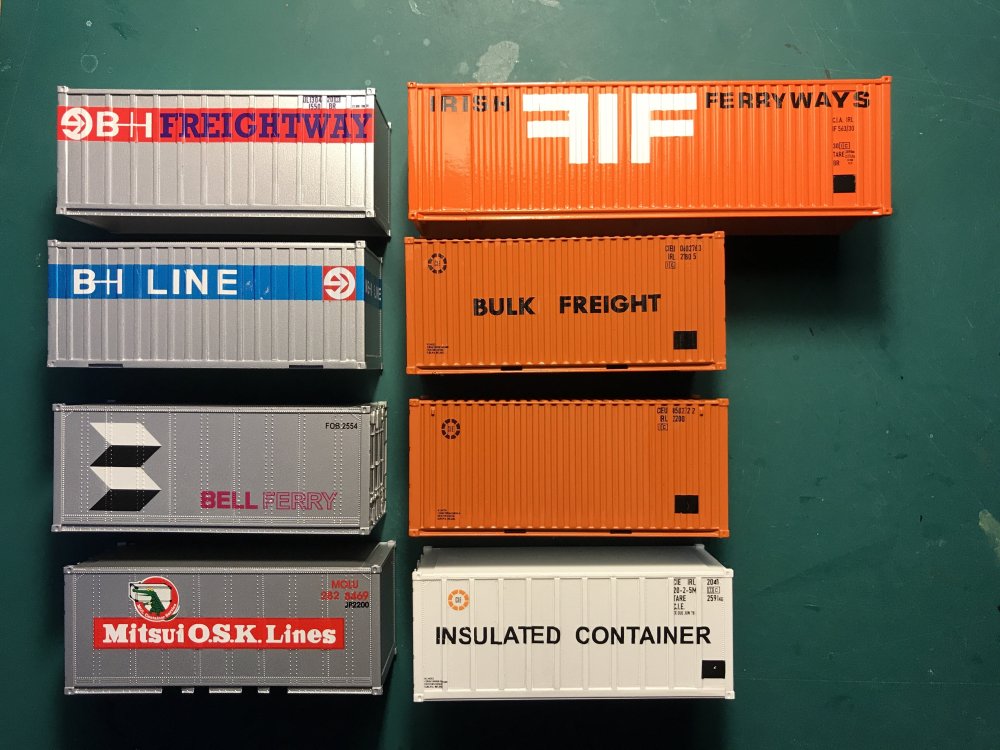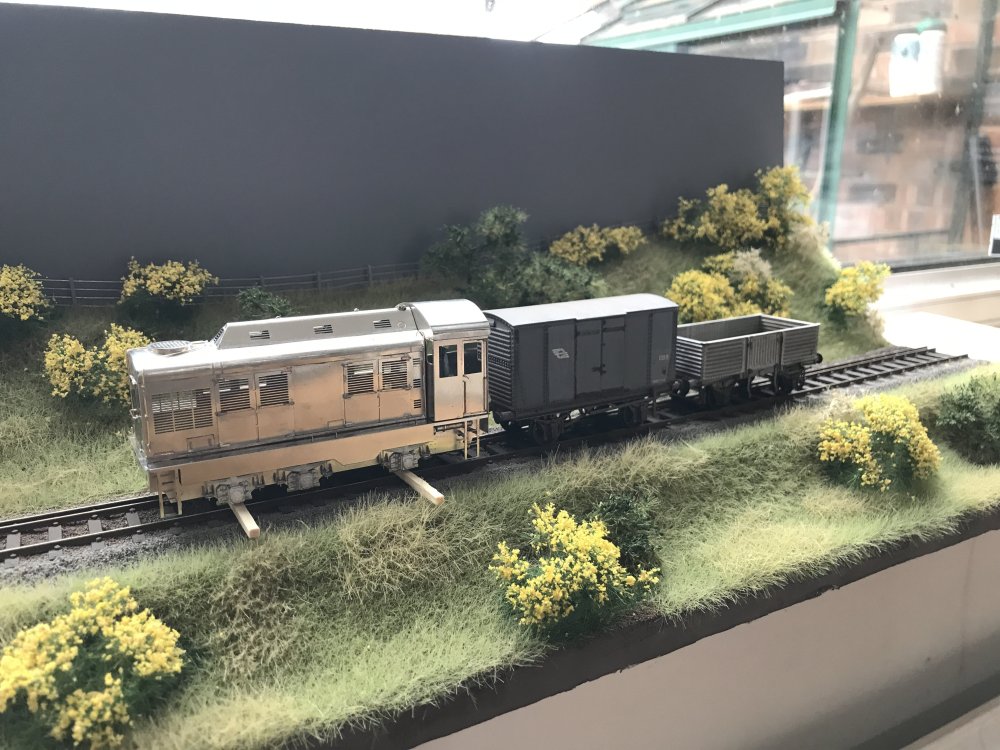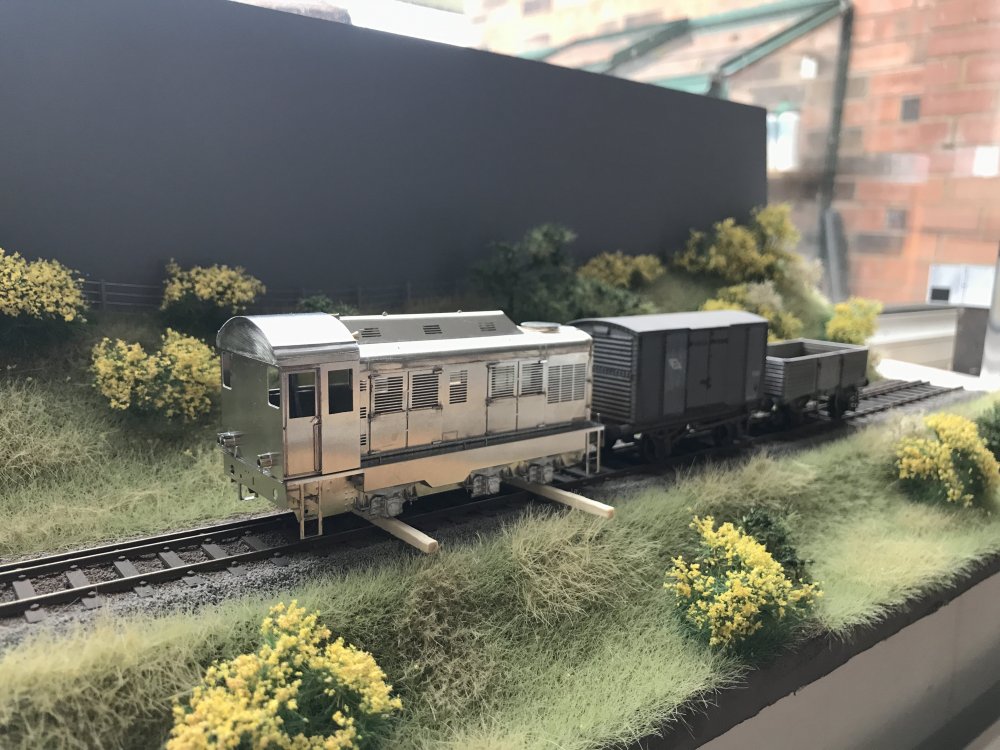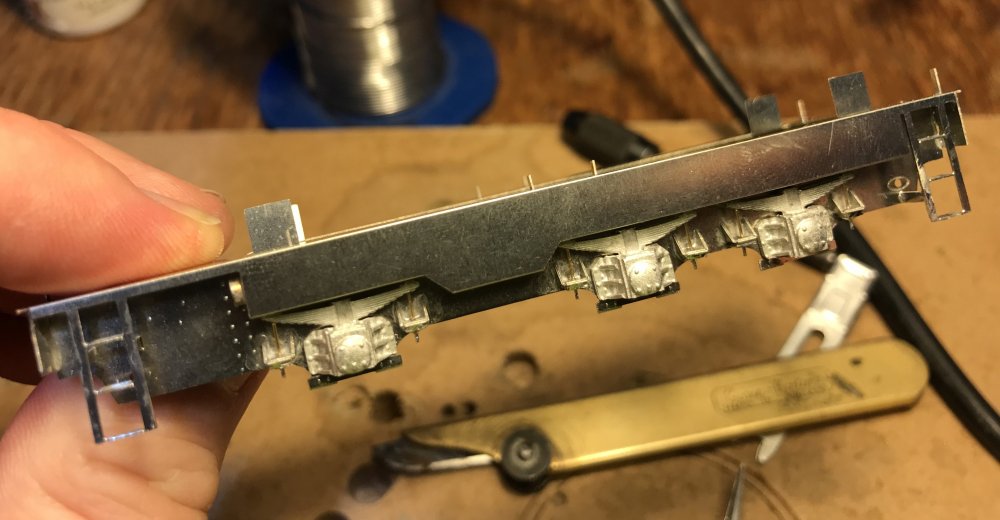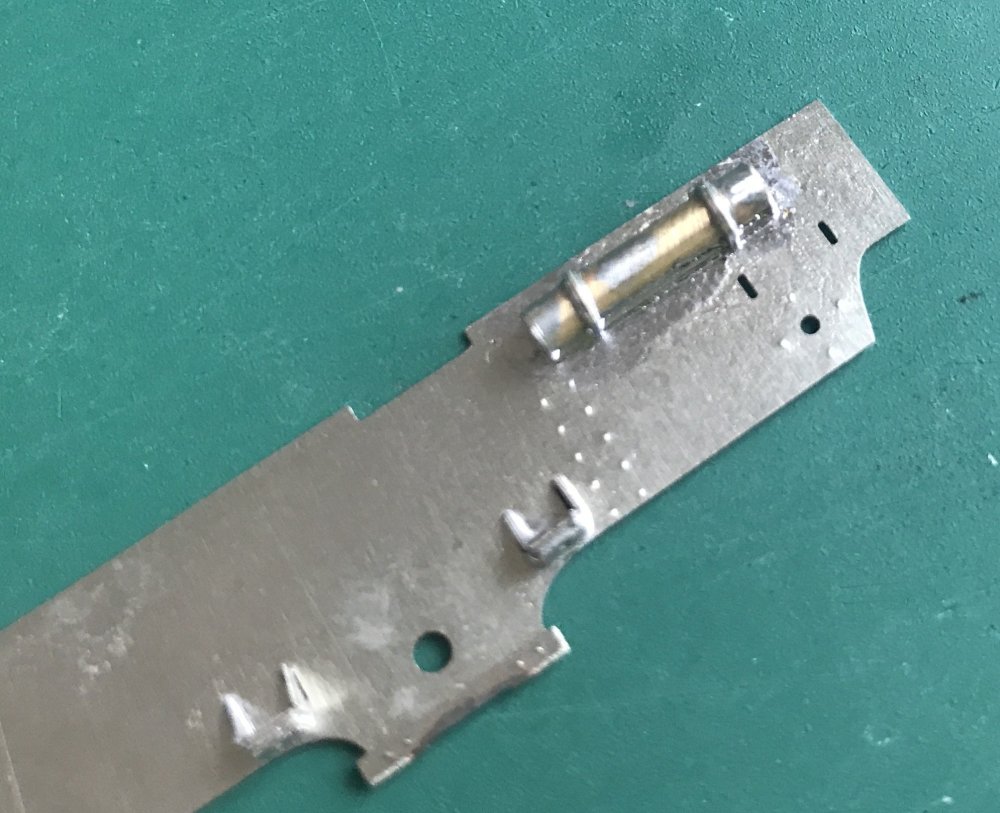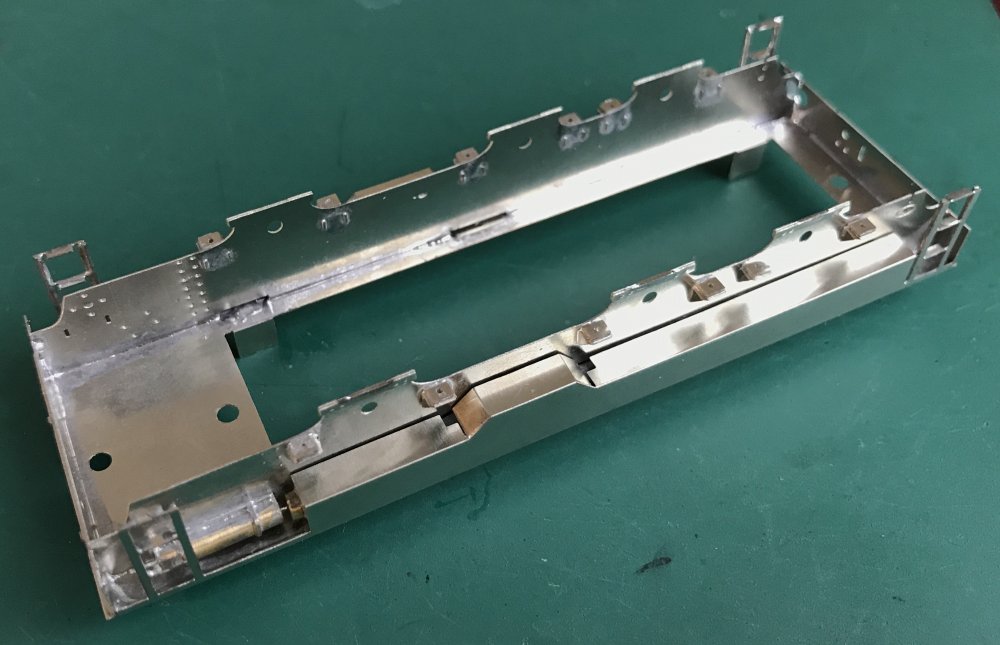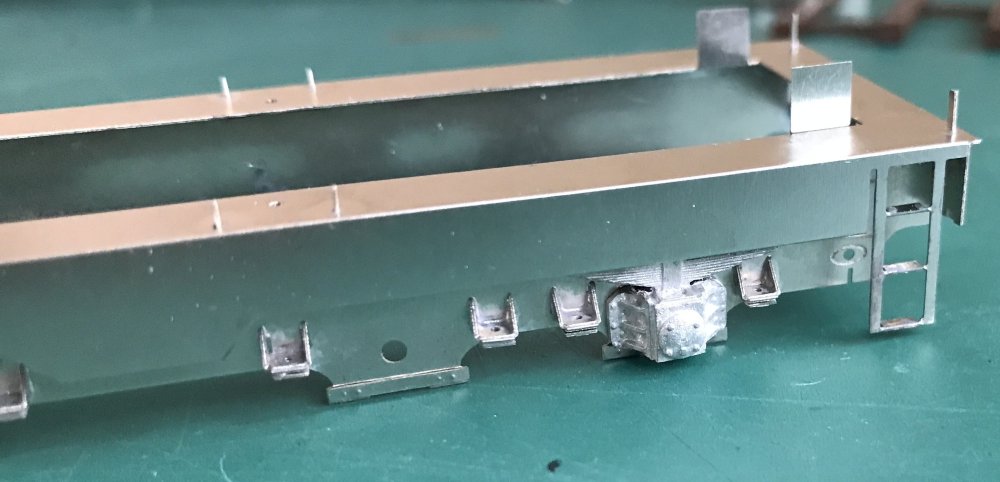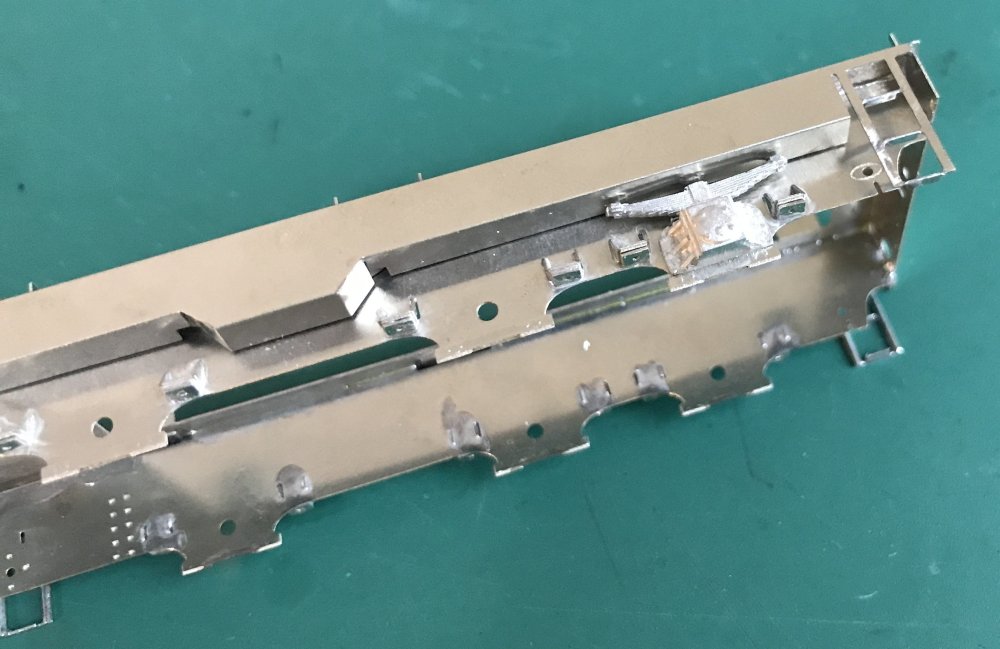
Mol_PMB
Members-
Posts
2,165 -
Joined
-
Last visited
-
Days Won
112
Content Type
Profiles
Forums
Events
Gallery
Blogs
Store
Community Map
Everything posted by Mol_PMB
-
Making an ‘E’ – the Maybach Diesel Model Assembly thread
Mol_PMB replied to Mol_PMB's topic in Irish Models
Do you happen to know which ones? I know E414 spent some time working in Cork and E410 was trialled at Fenit. -
"Voiding the Warranty" - Mol's experiments in 21mm gauge
Mol_PMB replied to Mol_PMB's topic in Irish Models
My custom transfers arrived so I thought I'd take a break from the E class and decorate some boxes. Work in progress. Containers by @Arran at C=Rail, most modified to some extent, and custom transfers by Precision Decals. The MOL transfers are from C=Rail and the CIE roundels are from Railtec. This was the custom sheet: -
I have fond memories of 112's sabbatical down south, including a busy beet season.
-
Making an ‘E’ – the Maybach Diesel Model Assembly thread
Mol_PMB replied to Mol_PMB's topic in Irish Models
A quick reassembly to pose with a couple of trucks. Looks big compared to the van, but they were, as shown in Ernie’s photo: Suppose I’d better turn it round…- 200 replies
-
- 15
-

-

-
Would you model in 21mm if RTR track and models were readily available?
Mol_PMB replied to BosKonay's topic in Irish Models
With traditional injection moulding there was a huge up-front cost in the tooling, which had to be funded by a society as you say. But with modern 3D printing technology such as the Templot / Plug track process it's apparently possible to design and print custom turnout and track bases with a few clicks of a button. I don't think the traditional approach is the only way forward. -
I suppose the guide rails on the sides of the A-frames (not shown in the model images) could be used for power supply and control. Or use radio control and batteries?
-
Would you model in 21mm if RTR track and models were readily available?
Mol_PMB replied to BosKonay's topic in Irish Models
I agree that the right gauge is 21mm. I have seen 20.2mm mentioned in several places but is anyone actually using this? I can't see the point of inventing a new gauge that doesn't match either the prototype or what the modellers have already. 19mm is almost indistinguishable from P4, and there are already established parts, standards, gauges, wheelsets etc for that. P4 may well be a valid option for Irish modelling, but it's not one that we need to provide new bits for. With 21mm, the basic plain track would be the same regardless of wheel standards. From the point of view of track standards, the differences are in the positioning of checkrails, and to a lesser extent wing rails, on pointwork. But these can be dealt with at the click of a button with the Templot / Plugtrack approach. This is true, and another issue may be the need to add suspension or compensation to rolling stock, which in some cases will require a new or completely rebuilt chassis. It's all possible and I admire the excellent results achieved by those who do so, but it's not going to appeal to many potential new 21mm modellers. So far, I've dodged the issue by not building any points. But I recognise that I have a mix of wheel standards on my rolling stock which may need resolving before I run things on a layout. Swapping wheelsets isn't too hard if there's a source of alternatives, but that's a bit of a challenge. I haven't got the patience to wait a year for Ultrascale, and I don't think many potential new 21mm modellers would have either! I wonder how much longer Ultrascale will continue to trade; it may not be a good idea to base the development of a new set of parts on a single supplier with such long lead times and an apparent reluctance to increase capacity or outsource manufacture to improve delivery times. Even in OO, RTR manufacturers have tended towards finer wheel profiles over time, though there remains a lot of variety out there. My gut feel is that the 1mm flangeway would be a place to start, which would match what quite a lot of people are using already (as listed above by John) and would tolerate the finer OO wheelsets as well as EM. In P4, the checkrail gap would need to be reduced slightly to provide full wheelset guidance at the crossing nose. -
I love the little story with each photo, the different times of day and season, just enough to set the imagination off to complete the picture. Very inspiring!
-
Yep, I’m too young to remember them anything other than blue. And I still need to organise myself a trip behind Uranus to see a black one…
-
Ah, I should have consulted my library before asking a daft question! I did nearly include green as an option. I must go back and re-read the GNRI locos tome.
-
Beautiful work! Really captures the lines of the real thing. Will she be blue or black?
-
Would you model in 21mm if RTR track and models were readily available?
Mol_PMB replied to BosKonay's topic in Irish Models
I suspect that the most practical way forward involves Templot and 3D printing. I think 3D printed track bases for both plain line and turnouts would actually be very easy to produce, with an understanding of Templot and 3D printers. Certainly people are churning them out in other gauges and I think the track gauge is just a simple input parameter to Templot However, 3D is not my strength. My mind works best with 2D stuff like etches and laser cutting. So I don’t draw in 3D CAD and I don’t have a 3D printing capability. We do have some people on the forum who are good at 3D printing. -
Making an ‘E’ – the Maybach Diesel Model Assembly thread
Mol_PMB replied to Mol_PMB's topic in Irish Models
Axleboxes soldered in place, and wire fitted for spring hangers. That's all for this weekend, there may be more tomorrow evening. -
Making an ‘E’ – the Maybach Diesel Model Assembly thread
Mol_PMB replied to Mol_PMB's topic in Irish Models
I've been making some progress on the frames this afternoon, though I'm not going to get them finished today, which had been my target. Some of the details are a bit fiddly: the spring hanger brackets seemed to be particularly prone to pinging off somewhere and being eaten by the carpet monster. Fortunately I had forseen this and included some spares on the etch! They look neat when done though. I've also put some strips of lead flashing into the fuel tanks which have added a useful 25g to the weight. The underside now looks like this. By design, there is a compromise in the position of the frames - they ought to be about 2mm closer together in reality, behind the buffer centres. In the model, the combined effects of 21mm gauge wheelsets with slightly overscale width treads, the extra sideplay needed for a 3-axle loco on trainset curves, and the need for the wheels to be electrically insulated from the frames, all meant that I had to place the frames a bit further apart than the prototype. That does have the secondary advantage of the buffers not being directly aligned with the frames, thus enabling sprung buffers to be fitted. However, for a 16.5mm gauge model the frames could perhaps be placed closer together. I've now started playing with the axlebox castings. These are intended for LMS Ivatt tenders and they are the closest I could find, but they're a little bit too deep and wide for the E class. I'm sanding them down to fit. Combined with the frames being slightly further apart, the axleboxes seem to stand out a bit more than on the prototype, but I hope it won't be too noticeable when complete and covered in some grime. There are still quite a few fiddly details to add to the frames and footplate; this stage is taking longer than expected but I'm still pleased with how it's looking.- 200 replies
-
- 14
-

-
Making an ‘E’ – the Maybach Diesel Model Assembly thread
Mol_PMB replied to Mol_PMB's topic in Irish Models
Thanks! I know what I'm going to do for my own model(s) and can make this available for others. That will be an etched chassis with the capability for fitting hornblocks and suspension/compensation for 21mm gauge. Designed for use with High Level motor/gearbox but I'm sure there are other options. It will also be buildable for 16.5mm gauge and I can include 2 sets of frame stretchers to suit the different gauges. I think fitting in the power transmission as well as the hornblocks will be difficult in 16.5mm gauge but I'm sure there's a way! I think a cheap and reliable RTR solution for 16.5mm gauge is the Fleischmann V60 chassis. I've now purchased an old one of these although I haven't got it yet. I will check that it fits and design some brackets to mate it to the loco body. An option that's intermediate in cost, complexity and fidelity is a custom BullAnt chassis based on their diesel motor bogie. Unless the V60 turns out to be unsuitable, I won't be taking the lead on the BullAnt option but if someone else wants to try this out then I'm happy to help. -
NIR 111: https://www.ebay.co.uk/itm/167303724993
-
Would you model in 21mm if RTR track and models were readily available?
Mol_PMB replied to BosKonay's topic in Irish Models
Agreed. I don't think 21mm gauge track is a licence to print money. Imagining IRM's point of view, promoting 21mm gauge adds extra challenges and costs to design models to suit multiple gauges, which may compromise the design of the more numerous 16.5mm gauge versions. Doesn't feel like good business sense, so I can appreciate their position. For those of us who do like 21mm gauge, whether for 4mm scale 5'3" or 7mm scale 3' gauge, there are a host of different wheel and flanegway standards in use. However, for the flexitrack most of those don't matter, it's only the actual track gauge that needs to be agreed*. And that's 21mm, right? I've seen mention of 20.2mm as a theoretical EM-equivalent but is there anyone actually using it? For comparison, here's an example plastic sleeper base for 22.2mm gauge, Swiss metre gauge in 1:45 continental O scale (one of my other projects). In that scale there are multiple standards too, the older RTR stuff was 22.5mm gauge with coarse wheels and flangeways, but more recent RTR models and most high-end models and scratchbuilt models use a finer scale and 22.2mm gauge. This track base takes Peco code 100 flat-bottom rail. * there may be other issues such as bullhead vs flat-bottom, sleeper spacing, wooden vs concrete etc, but those are matters of appearance not compatibility. -
Would you model in 21mm if RTR track and models were readily available?
Mol_PMB replied to BosKonay's topic in Irish Models
Thanks DJD, a good summary. For flexitrack, it's worth remembering that the part needed is one moulding, of maybe 8 sleepers and rail fastenings connected by webs. It can be made to fit standard Peco rail, which the user could buy separately and feed into the sleepers. A dozen of those mouldings would make up a yard of track. To build 10 yards of track would use 120 of those moulded parts. If there's a few people interested, the numbers add up quite quickly, and would probably tip the balance towards injection moulding rather than 3D printing. But even the availability of a 3D printed part would be very welcome. By just supplying the mouldings they would be a small and lightweight product, easy to ship. -
I've had a read.
-
Wheel standards are one of the challenges, I agree. But not impossible. Worth a discussion.
-
Making an ‘E’ – the Maybach Diesel Model Assembly thread
Mol_PMB replied to Mol_PMB's topic in Irish Models
I’m idly wondering what to do next. NIR 1 class is another notable gap to fill, but the lack of dimensions and drawings is a problem. Something else built at Inchicore at the same time as the E401s? Very niche but arguably better than 36001. -
Excellent! So it’s surely only a very small step for IRM to offer 21mm gauge wheelsets for the Irish locos?
-
Making an ‘E’ – the Maybach Diesel Model Assembly thread
Mol_PMB replied to Mol_PMB's topic in Irish Models
Many thanks. I have to confess this is going together better than I expected. There are a few minor issues I would change with the benefit of hindsight but nothing major so far. Just waiting on IRM to piss on my chips with an RTR version! Seriously, I don’t think there will ever be a mass market for an E401 but maybe there’s a handful of people on here who might be interested in making one, and I could mention it on RMweb I suppose. Once I’ve finished the body kit I will have to develop the chassis. Several options and that will depend on who is interested and what gauge they are working in. -
Next up - IRM models in 21mm gauge? Accurascale offer P4 wheelsets. Just saying…
-
Very nice! I have bought some of their rat buffers for my E class.
.png.c363cdf5c3fb7955cd92a55eb6dbbae0.png)

